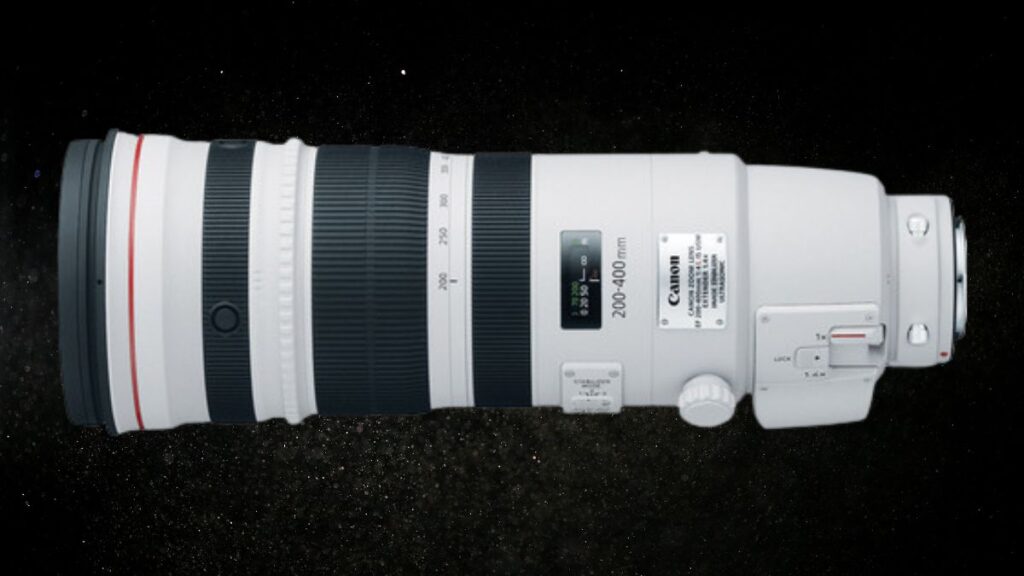Lens Logic Verdict
When it comes to wildlife, sports, and action photography, having a lens that can adapt quickly to changing scenes is critical. The Canon EF 200-400mm f/4L IS USM Extender 1.4x is a standout option designed specifically for photographers who need exceptional reach, fast performance, and the flexibility of an integrated teleconverter. Built for professionals and serious enthusiasts, this L-series lens is more than just a zoom—it’s a rugged, optically advanced tool crafted for real-world use. This review will explore what makes this lens special, how it performs in practical scenarios, and whether it lives up to its reputation.
Pros
- Exceptional image quality across the zoom range
- Unique built-in 1.4x extender adds versatility
- Fast, accurate autofocus with full-time manual override
- Effective 4-stop image stabilization with three modes
- Robust, weather-sealed construction
- Excellent performance even with APS-C bodies
Cons
- Large and heavy—requires support for extended use
- Very high price point
- Slight drop in sharpness when the extender is engaged
Today’s Canon EF 200-400mm f/4L IS USM Extender 1.4x Amazon Deal
Why you can trust Lens Logic? we put hours into testing each product or service we review. This way, you know you’re getting the best. Learn more about our testing process.

Mason knows photography inside and out. With 15 years of hands-on experience, he’s written about cameras, lenses, and gear of all kinds. He even spent five years as a journalist, diving deep into music and writing sharp, engaging stories. Now, Mason shares his photography knowledge, helping readers find the right gear and perfect their skills. He’s also proud of his unbeatable Wordle streak!
Key Features and Specifications
At its core, the EF 200-400mm f/4L IS USM Extender 1.4x is a full-frame-compatible, EF-mount lens with a constant f/4 maximum aperture. What sets it apart immediately is its built-in 1.4x extender, which allows users to shift from 200-400mm to an extended 280-560mm focal range with the simple flick of a switch. This transformation comes at the cost of a stop of light, changing the aperture to f/5.6, but the trade-off in reach is often well worth it in the field.
The lens incorporates advanced optics, including one fluorite and four ultra-low dispersion (UD) elements. These are designed to reduce chromatic aberration and maintain image clarity, even at long distances. Canon’s Super Spectra Coating is also applied to individual elements to control flare and ghosting, which proves especially useful in high-contrast or backlit situations.
Autofocus performance is handled by a ring-type Ultrasonic Motor (USM), assisted by a high-speed CPU and optimized algorithms. This combination ensures fast, quiet, and accurate focus acquisition. Additionally, the lens offers full-time manual focus override, a focus limiter switch, and a Focus Preset function—ideal for tracking fast-moving subjects.
The Optical Image Stabilizer (IS) system provides up to four stops of shake correction and offers three IS modes. Standard mode is suited for general handheld shooting, the second mode is optimized for panning, and the third only activates IS during exposure, minimizing visual distractions in the viewfinder.
Build Quality and Handling
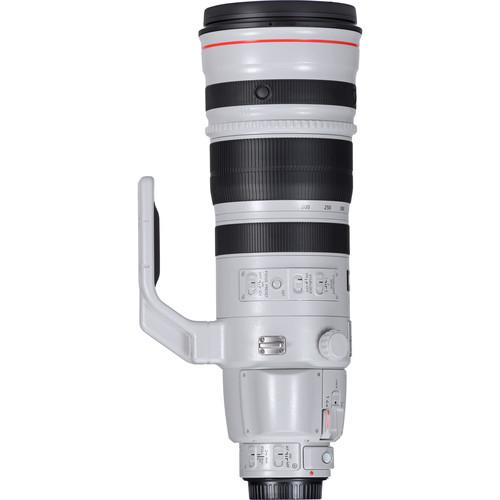
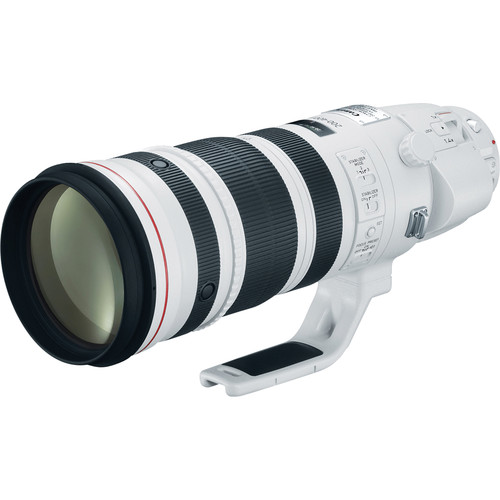
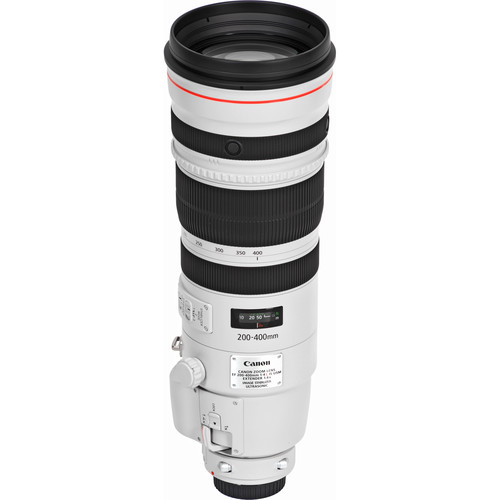
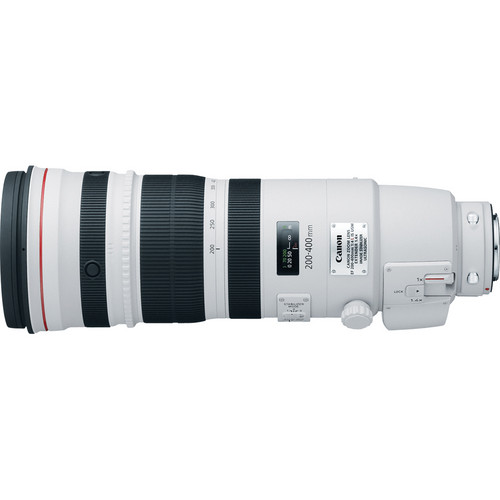

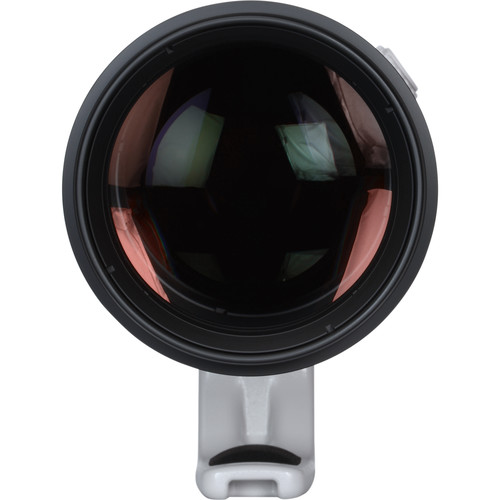
As an L-series lens, the 200-400mm f/4L is built to withstand demanding conditions. It features a weather-sealed design and fluorine coatings on exposed elements to repel water, dust, and smudges. The lens feels solid and well-balanced, particularly when mounted on a tripod or monopod using its detachable and rotatable tripod collar.
Physically, this is a large and heavy lens, measuring about 14.4 inches long and weighing roughly 8 pounds. It’s not something you’ll want to carry handheld for long periods, but its weight is well-distributed and manageable for experienced users accustomed to super-telephoto gear. Canon has included a dedicated Power Focus mode, using a separate ring to allow smooth focus transitions during video recording. It’s a small but thoughtful addition that increases the lens’s versatility.
Image Quality
Image quality from the EF 200-400mm is simply excellent. Sharpness is impressive across the frame, even wide open at f/4. When the built-in 1.4x extender is engaged, image quality remains strong, with only a minor reduction in sharpness and contrast—something to be expected when increasing focal length optically.
Thanks to the specialized lens elements, chromatic aberration is very well controlled. Even in high-contrast conditions, there’s minimal color fringing visible, and flare is effectively suppressed. Bokeh is smooth and pleasing, helped by a nine-blade rounded diaphragm, making subject separation at longer focal lengths feel natural and refined.
Whether you’re capturing distant wildlife or isolating athletes in action, this lens delivers exceptional clarity, color fidelity, and overall image rendering. The transition from in-focus to out-of-focus areas is gentle, producing aesthetically pleasing results that help elevate your subject.
Performance with the Built-in Extender
The built-in 1.4x extender is the highlight of this lens, offering unmatched convenience and speed when you need to switch focal lengths. Engaging the extender instantly shifts the focal range from 200-400mm to 280-560mm—an invaluable feature when working in dynamic environments.
The transition is smooth, and because the extender is optically matched and built into the lens, it doesn’t degrade image quality as much as traditional external teleconverters might. Autofocus speed remains quick, and tracking performance is largely unaffected, which is a crucial advantage for shooting fast-moving wildlife or sports scenes.
On APS-C bodies, the lens effectively provides a staggering 320-640mm range, or 448-896mm with the extender engaged. This makes it an incredible option for users who prioritize reach without compromising on portability and integration.
Autofocus and Stabilization
Canon’s autofocus implementation here is top-tier. The ring-type USM is fast, reliable, and extremely quiet. During testing, the lens tracked moving subjects effortlessly, and the ability to override autofocus manually at any time is a bonus.
The Focus Preset function is especially useful for situations where you anticipate action occurring at a specific spot—pressing a button instantly pulls focus to the saved distance. The focus limiter switch helps speed up AF by restricting the focus range, another feature that’s valuable in fast-paced environments.
The three-mode Image Stabilizer works very well. In mode 1 (standard), handheld shots remain sharp even at lower shutter speeds. Mode 2 is great for panning, keeping the subject sharp while blurring the background. Mode 3 activates IS only during exposure, helping when you need a stable viewfinder for fast and erratic motion. Overall, the system gives you confidence to shoot handheld when needed and stabilizes even long-reach shots with excellent consistency.
Use Case: Wildlife and Sports Photography
The EF 200-400mm f/4L IS USM Extender 1.4x is practically built for outdoor action. Wildlife photographers will appreciate the extended reach and responsive autofocus, allowing them to track and capture skittish animals from a distance. The weather-sealed body is ideal for unpredictable outdoor environments, from humid rainforests to dry, dusty plains.
Sports shooters benefit from the lens’s sharpness and fast AF, with the added flexibility to switch to a longer focal length in seconds. In football, motorsports, and track-and-field events, having that kind of optical agility can be the difference between a good shot and a missed opportunity.
Comparison with Other Canon Super-Telephoto Lenses
Let’s see how the Canon EF 200-400mm f/4L IS USM Extender 1.4x fares when stacked up against its competitors in the high-performance telephoto zoom category. This isn’t a cheap lens by any means, so it’s worth asking—are you paying for versatility and performance, or just the red-ring prestige?
Canon EF 200-400mm f/4L IS USM vs Canon EF 100-400mm f/4.5-5.6L IS II USM
Starting with a popular alternative, the Canon EF 100-400mm f/4.5-5.6L IS II USM. This lens is noticeably more affordable and compact, making it a favorite for wildlife and sports shooters on the move. However, the 100-400mm doesn’t have a built-in extender, which means you’ll need to add a teleconverter for extra reach, at the cost of image quality and weather sealing. It also has a narrower maximum aperture, especially noticeable at the long end, where the 200-400mm still holds an f/4 advantage (until the extender is engaged). Simply put, the 200-400mm is more specialized and professional-grade, while the 100-400mm suits enthusiast-level photographers.
Canon EF 200-400mm f/4L IS USM vs Nikon 200-500mm f/5.6E VR
Next, the Nikon 200-500mm f/5.6E ED VR brings longer native reach at a significantly lower price point. For Nikon users, this is a go-to wildlife and aviation lens. However, the fixed f/5.6 aperture limits low-light capability and background separation compared to Canon’s f/4 offering. Plus, it lacks the L-series weather sealing and premium construction that Canon delivers.
Canon EF 200-400mm f/4L IS USM vs Sony 200-600mm f/5.6-6.3 G OSS
Lastly, Sony’s 200-600mm f/5.6-6.3 G OSS offers a tempting focal range for mirrorless shooters. While its autofocus is fast and its sharpness is excellent, it’s heavier and has a slower aperture. Also, it lacks the built-in extender and Canon’s advanced stabilization modes.
So if you’re shooting fast-moving subjects and need top-tier optical performance with on-the-fly focal flexibility, the Canon EF 200-400mm still stands in a class of its own.
Price and Value for Money
With a retail price of $11,099.00, the Canon EF 200-400mm f/4L IS USM Extender 1.4x isn’t just expensive—it’s a serious investment. But what do you get for that kind of money?
First, you’re getting a professional telephoto lens with unmatched versatility. The built-in 1.4x extender gives you instant access to a 280-560mm reach without sacrificing image quality or weather sealing. Add to that the constant f/4 aperture, fluorite and UD optics, advanced Image Stabilization, and top-tier autofocus—all wrapped in a rugged, weather-sealed L-series build—and you’re looking at one of the most feature-rich Canon lenses ever made.
From a lens value standpoint, it makes sense for full-time wildlife, sports, and action photographers who demand high performance in tough conditions. It replaces the need to carry multiple primes or fumble with external teleconverters in the field, which can be a game-changer.
That said, this isn’t a lens for hobbyists. If you’re shooting occasionally or just getting into telephoto photography, this kind of professional telephoto lens likely outweighs the benefits. But for those making a living with their gear, the Canon 200-400mm more than justifies its premium price tag.
Final Thoughts
The Canon EF 200-400mm f/4L IS USM Extender 1.4x is a professional-grade super-telephoto zoom lens that combines the best of reach, versatility, and optical quality. Its integrated extender is not just a novelty—it’s a game-changer for photographers who need to adapt instantly without compromising performance.
From wildlife to sports and beyond, this lens delivers consistent, stunning results in the most demanding conditions. If you’re a professional or serious enthusiast who needs a do-it-all telephoto zoom with class-leading features, there’s little else on the market that compares. The investment is steep, but the performance and flexibility more than justify the cost for those who truly need what this lens offers.


